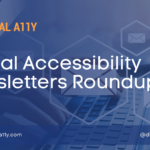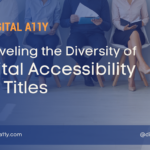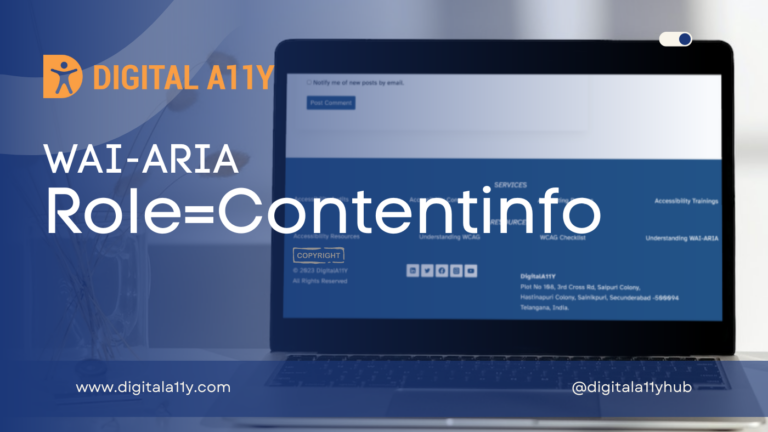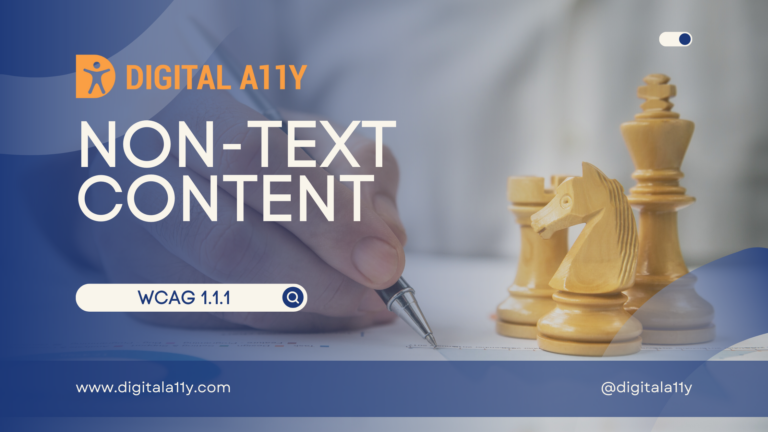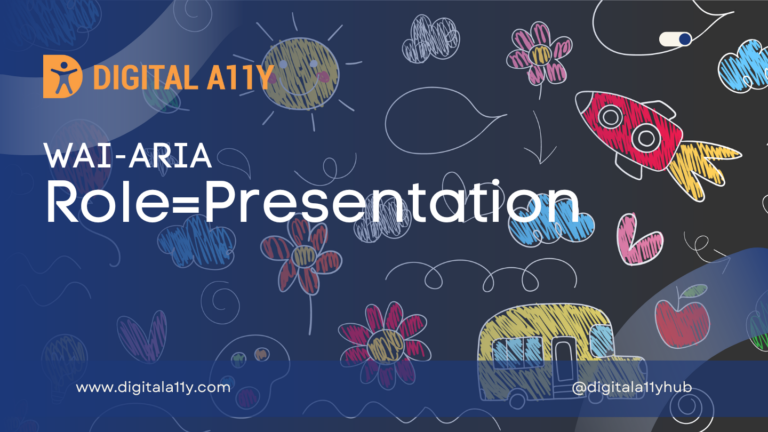The History of Digital Accessibility: A Timeline of Progress
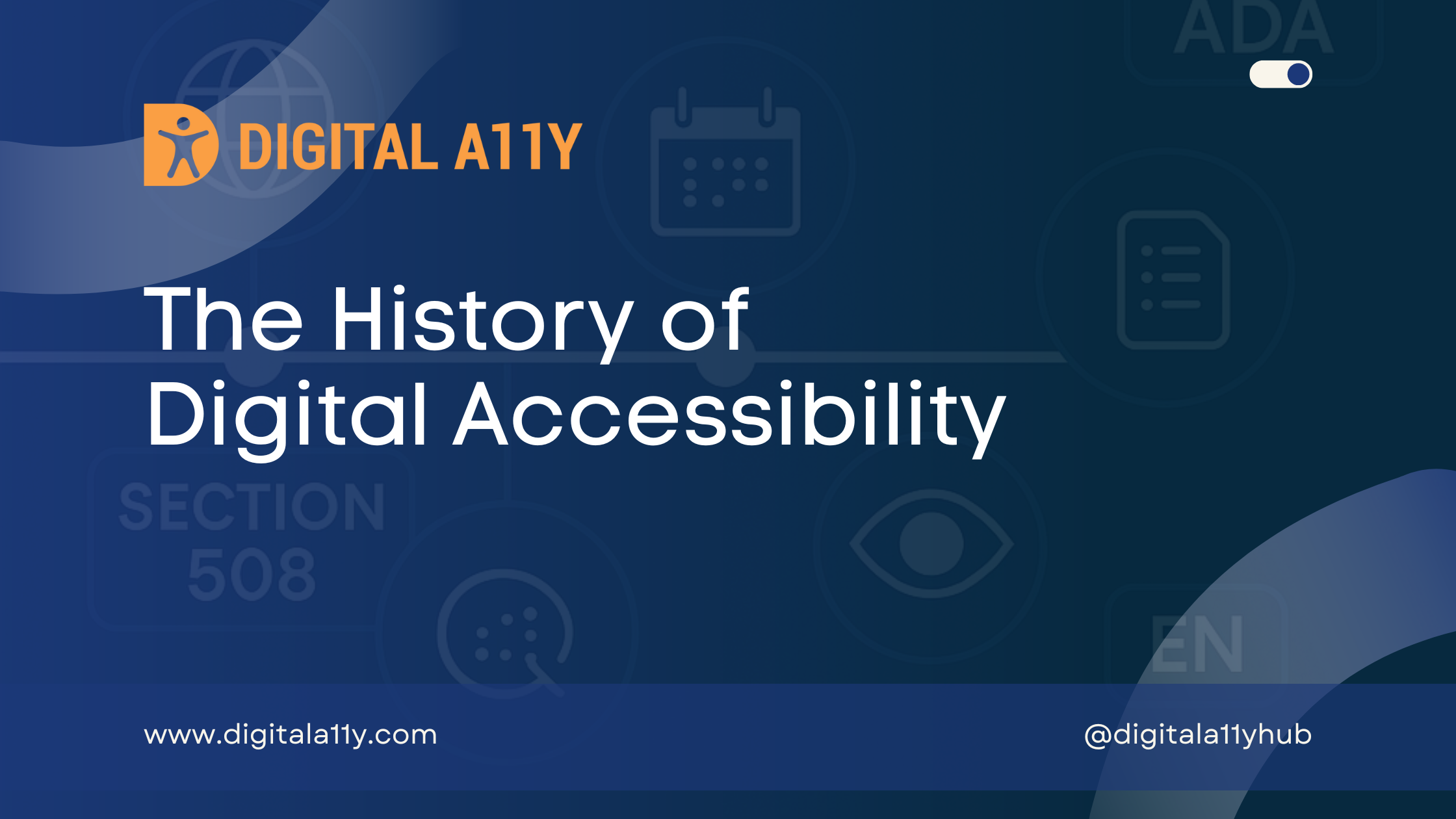
Okay, quick question: Have you ever tried opening a peanut butter jar with one hand? Yeah, not fun. That’s kind of what using the internet felt like for people with disabilities in the early days. Frustrating. Exclusionary. And honestly, unnecessary. But don’t worry—this story isn’t all doom and dial-up tones.
Digital accessibility has evolved over the past several decades to ensure that individuals with disabilities can access and interact with digital content. With rising awareness, legal mandates, and technological advancements, we are moving towards a more inclusive digital world. So buckle up, because we’re time-traveling through the (not-so-dusty) archives of digital accessibility history, one breakthrough at a time.
1973: The Rehabilitation Act of 1973
Okay, so this was way before I was born, and I honestly had no idea what was going on back then—but turns out, 1973 was a big deal for disability rights.
That year, the Rehabilitation Act was passed in the U.S., and it said: Federal agencies can’t discriminate against people with disabilities.
At first, this law focused mostly on physical spaces— like making buildings wheelchair-friendly. But later, it became the starting point for digital accessibility too, especially with a section called Section 508.
This part of the law said that websites and digital tools used by the government must be accessible to everyone—including people with disabilities.
In short: It planted the seed for all the digital accessibility work that came later!
1990: The Americans with Disabilities Act (ADA)
This one’s a major milestone!
Most of us have at least heard of the ADA—aka the Americans with Disabilities Act. But let’s be honest… when we think of it, we usually picture wheelchair ramps, wide bathroom stalls with grab bars, accessible elevators, etc. Right?
That’s all correct—and falls under the physical accessibility part of the law. For example:
A country club must provide accessible parking and ramps because it’s open to the public. But your house doesn’t need to—because it’s private property.
The ADA says that “places of public accommodation”—aka spaces open to the general public—must be accessible. And while this started out applying mostly to physical spaces, things changed over time.
What about the internet?
When the ADA was passed in 1990, the World Wide Web had just been invented by Tim Berners-Lee the year before! No one really knew it would become what it is today.
So, the law didn’t originally mention websites. But as the internet became part of daily life, courts started saying:
“Hey, websites and apps count as public spaces too!”
And they should be accessible to everyone—including people with disabilities.
The tricky part?
The ADA doesn’t spell out exactly how digital accessibility should work.
There’s no official checklist or rulebook in the law itself—just the expectation that everyone should be able to access digital services.
That’s why we often refer to guidelines like WCAG (more on that later) to figure out how to make websites and apps accessible.
So why does this matter?
Because even today, most web accessibility lawsuits in the U.S. are based on the ADA—especially Title III, which covers businesses and organizations that serve the public.
The ADA was modeled after earlier laws like the Rehabilitation Act of 1973, and also took inspiration from the Civil Rights Act of 1964.
It applies to a ton of areas, including:
- Employment
- Transportation
- Education
- Government services
- Public places like restaurants, shops, and websites
- Telecommunications
It was a civil rights game-changer because it officially recognized that disability is a protected identity, just like race, gender, or age.
1995: Microsoft Windows Learns to Be Kind
Picture this: It’s 1995. Everyone’s wearing flannel, yelling “You’ve got mail!” and trying to survive without Google Maps. Amidst all this, Windows 95 rolls in and says, “Hey, maybe we should make computers usable for everyone.”
That’s when Microsoft added built-in accessibility features—not as a bonus CD-ROM you had to dig out from the cereal box, but right there, fresh out of the box.
Here are the OGs of digital accessibility:
- StickyKeys: For when your fingers refuse to play Twister on the keyboard. Now you can hit Ctrl, then Alt, then Del—one at a time—and still tell your PC to calm down.
- FilterKeys: Because keyboards shouldn’t freak out if your hands tremble or tap twice.
- ToggleKeys: Want to know if Caps Lock is yelling again? Let your ears decide—beep boop.
- MouseKeys: Forgot your mouse at home? Just become besties with your number pad.
Windows 95 basically said, “Accessibility isn’t an afterthought—it’s a feature.” And for a lot of users, that was the first real invite to the digital party.
1996: DOJ Says, “Yep, the Web Counts Too”
This one’s huge. The U.S. Department of Justice took a look at the booming World Wide Web and went, “Wait a minute… why should websites be allowed to ghost disabled users?”
Under Title III of the Americans with Disabilities Act, physical spaces like stores, restaurants, and schools were already required to be accessible. But the digital world? That was still the wild, inaccessible west—until the DOJ stepped in and said, “Websites are public accommodations too.”
If your website is the digital equivalent of stairs with no ramp, you might just find yourself in court. (Spoiler: Domino’s Pizza did. The court wasn’t hungry for excuses.)
1998: Section 508 Gets a Digital Makeover
Remember the Rehabilitation Act of 1973? It originally helped make physical workplaces more accessible. But by the late ‘90s, the internet was where people were working, learning, and watching way too many cat videos.
So in 1998, the U.S. government said, “Alright, enough’s enough,” and updated Section 508 to demand that federal agencies—and anyone who wants to work with them—make their digital stuff accessible. If your website was a puzzle that only Sherlock Holmes could solve, you weren’t getting that government contract. Let’s just say a lot of developers suddenly learned what alt text was.
1999: Enter WCAG 1.0 – The Internet’s First Rulebook for Inclusion
This was the year the web finally got a conscience.
Tim Berners-Lee, the godfather of the internet (no horses’ heads involved), believed the web should work for everyone. So the W3C released the Web Content Accessibility Guidelines (WCAG) 1.0—a gloriously nerdy list of 14 guidelines and 65 checkpoints to make the web actually usable for people with disabilities.
Think of it like the Marie Kondo guide for websites—“Does this spark accessibility joy? No? Fix it.”
Instead of levels like we have today, WCAG 1.0 used priorities:
- Priority 1: Must-do. If you don’t fix these, some people simply won’t be able to use your site. Think of it as the “wheelchair ramp” equivalent for digital spaces.
- Priority 2: Should-do. These barriers don’t block everyone, but they make the experience frustrating or limiting.
- Priority 3: Nice-to-have. These tweaks enhance usability and inclusion but aren’t mission critical.
This structure laid the groundwork, but it would take a few more years (and another version) before we got the Level A, AA, AAA conformance model we know today.
1999/2000: Australia’s Accessibility Mic Drop
Meanwhile, in Australia, Bruce Maguire, a blind man, sued the organizers of the Sydney Olympics. Why? Because their website basically told blind users, “Good luck navigating this mess.”
He wasn’t having it. And you know what? He won.
This case was the equivalent of throwing a boomerang that hit every inaccessible site right in the face. It led to WCAG becoming the standard for Australian government websites.
Moral of the story: Don’t mess with accessibility. Or Australians.
2000: Microsoft Talks Back (In a Good Way)
By Windows 2000, Microsoft went next-level: it introduced Narrator, a built-in text-to-speech tool. It wasn’t the smoothest voice on the block—think more robot-butler than Morgan Freeman—but it was a game changer.
Also included? A virtual keyboard for folks who couldn’t use physical ones, and a screen magnifier to zoom into content without needing a telescope.
This was Microsoft telling blind and low-vision users: “You belong here, and we’ll speak your language—literally.”
2002: Apple Joins the Accessibility Party
Finally, not to be outdone by Windows, Apple’s OS X Jaguar (yes, they named it after a jungle cat) introduced its own Universal Access features:
- Screen reader? ✅
- StickyKeys? ✅
- Visual enhancements for those with low vision? ✅
Apple’s philosophy was clear: “It’s not a bonus if your product works for everyone. It’s the bare minimum.”
2008: WCAG 2.0 is Released
As the internet grew and new technologies appeared, the W3C released WCAG 2.0 in 2008 to improve web accessibility. This version moved away from a rigid checklist and focused instead on four timeless principles known as POUR:
- Perceivable: Can users see or hear the content?
- Operable: Can users navigate and interact with it?
- Understandable: Is it easy to read and use?
- Robust: Will it work with different devices and assistive tech?
These core ideas gave developers more flexibility and future-proof guidance, helping websites evolve alongside new tech and user needs.
And now came the levels—yep, like a video game, but for accessibility compliance:
- Level A: The baseline. You’ve made the site technically accessible. It’s the digital version of “at least the elevator works.”
- Level AA: The standard most organizations aim for. It balances usability and inclusivity—and helps you stay out of legal hot water.
- Level AAA: The platinum tier. It’s aspirational, super inclusive, but not always practical for every type of content. (Making it perfect for one group can sometimes make it tougher for another.)
WCAG 2.0 wasn’t just an upgrade—it was a whole new mindset shift. Instead of checking boxes, designers and developers were now thinking about real people, real needs, and real-world usage.
2009: Apple Introduces VoiceOver for iPhones
In 2009, Apple added a new tool called VoiceOver to the iPhone 3GS. It was the first screen reader that used touch gestures, making it easier for blind users to use a smartphone.
Even though it was designed for people with disabilities, many others also benefited. For example, video calling helped deaf users communicate through sign language—even if that wasn’t the original plan!
In 2011, Stevie Wonder thanked Apple, saying:
“There’s nothing on the iPhone or iPad that you can do that I can’t do.”
2014: Europe Introduced EN 301 549
The European Union introduced EN 301 549, a rule that says digital tools and websites must be accessible. It’s similar to Section 508 in the U.S., which requires government websites and tools to work for people with disabilities.
EN 301 549 is based on WCAG, meaning it follows the same accessibility standards.
2018: WCAG 2.1 Adds Mobile and Cognitive Support
Ten years after 2.0, WCAG 2.1 came out with updates to support:
This version covered more user needs, like better text spacing, target size, and content that works well with screen orientation changes.
With smartphones becoming more popular, WCAG 2.1 was released to include:
- Mobile support
- Low vision improvements
- Help for people with cognitive disabilities
It added new rules for things like:
- Screen size and orientation
- Making buttons easier to tap
- Letting text resize or reflow
- Making sure content works well on mobile devices
This version helped websites become more inclusive for a wider range of people, especially those who were left out before.
2018: Lawsuits and the DOJ’s ADA Clarification
More people started suing companies for having websites that weren’t accessible. For example:
- Nike and Five Guys were sued in 2017.
- Winn-Dixie went to trial in 2018 became the first web accessibility case to go to trial. The court initially ruled in favor of the blind plaintiff, but this decision was overturned later.
The DOJ sent a letter to Congress saying the ADA applies to websites, but left room for interpretation:
“The absence of specific rules doesn’t mean websites can ignore the ADA.”
This vague stance led to more confusion and inconsistent legal outcomes.
2017–2020: Over 8,000 Accessibility Lawsuits Filed
Between 2017 and 2020, more than 8,000 lawsuits were filed in U.S. federal courts. Most were about websites or apps that weren’t accessible.
Why It Matters:
For big companies, fixing accessibility is cheaper than fighting lawsuits. So many started investing in accessible design.
2019: Legal Pressure Grows
In 2019 alone, over 2,200 lawsuits were filed. This showed how serious web accessibility had become—not just legally, but ethically too.
What Changed:
Businesses realized they had to fix their websites—not just to follow the law, but to serve everyone better.
2020: COVID-19 Shows Why Accessibility Matters
When the pandemic hit:
- Schools went online
- People worked from home
- Healthcare went virtual
Suddenly, accessible websites weren’t just nice to have—they were essential.
The Result:
Demand for features like captions, keyboard support, and screen reader compatibility skyrocketed. This pushed many companies to take accessibility more seriously.
2021: WCAG 2.2 – The Upgrade Nobody Knew They Needed
Ah, 2021. The year we were all trying to figure out if banana bread was still cool. Meanwhile, the web accessibility world was cooking up something far more important—WCAG 2.2.
This draft came packed with updates aimed at helping:
- People with cognitive disabilities
- Folks with low vision
- Those tapping their screens with one thumb on mobile devices
Think of it like adding ramps to digital buildings—more people could now come in comfortably, no extra gymnastics required.
2022: Europe Drops the Accessibility Mic
Enter the European Accessibility Act (EAA). Basically, the EU stood up and said, “Hey, if your digital stuff isn’t accessible by 2025, you’re in trouble.”
Why does this matter?
Because this act didn’t just raise the bar—it put the bar on a global stage. Now, countries and companies everywhere had to start taking notes… or take the heat.
Meanwhile, Back in the U.S. of A…
The Department of Justice (DOJ) reminded everyone that the Americans with Disabilities Act (ADA) isn’t just about buildings and sidewalks. It covers websites too. So yes, your homepage needs to be as welcoming as your storefront.
Google Gets Asked the Big Question: Does Accessibility Affect SEO?
John Mueller (Google’s search oracle) gets asked if accessibility is a ranking factor.
And his answer? “Not exactly.”
Basically, accessibility doesn’t have a scoreboard like page speed does (yet), but Google still cares. Accessibility might not win you points, but it’ll keep you from losing users.
It’s like brushing your teeth. It may not win you an award, but skip it long enough and things will get… funky. Same with accessibility.
2023: Accessibility Meets Sci-Fi
In 2023, accessibility packed its bags and traveled into the future. Suddenly, it wasn’t just about websites anymore—it was about:
- AI tools that could caption your Zoom rants in real time
- Virtual Reality experiences that didn’t leave anyone behind
- Smart devices that spoke your language, even if that language wasn’t spoken
Technology grew up, and accessibility made sure it didn’t leave grandma—or anyone else—out of the picture.
2024: Accessibility Goes Where No Guidelines Have Gone Before
Last year, accessibility jumped off the web and into the metaverse, NFTs, gaming, and blockchain. Yep, it went full-on sci-fi.
And WCAG 3.0 showed up like a wise grandparent—gentler, more flexible, and ready to make the rules user-friendly.
Let’s put it this way:
If WCAG 2.0 was the strict professor, WCAG 3.0 is the cool mentor who lets you rewrite the assignment… as long as it works for everyone.
But here’s the catch—WCAG 3.0 is still a working draft. That means the W3C is gathering feedback, testing approaches, and refining the structure. It’s not the official rulebook yet, but it’s a sneak peek at the future of digital inclusion.
2025: Accessibility Gets Real (Like, Really Real)
This year, accessibility stopped being “that thing we’ll get to later” and became front and center—finally.
- Major brands are no longer just “checking the box”—they’re baking accessibility into every product like it’s grandma’s secret sauce.
- AI isn’t just predicting what you want to shop for—it’s adjusting interfaces, font sizes, color contrast, and even language based on you.
- And lawmakers? They’re tightening things up. No more “we didn’t know.” Now it’s “you better show.”
Wrapping It Up: Your Future Self Will Thank You
Let’s get personal for a sec.
Accessibility isn’t just for “them.” It’s for all of us. We’re all moving up the age ladder, and guess what comes with that? Glasses. Hearing aids. Slower reflexes. The works.
You’re not just “making something for people with disabilities.”
You’re just future-proofing your digital life—for everyone, including future-you.
It took decades to get our physical world accessible—and we’re still working on it. Let’s not wait that long for digital spaces. And no—you don’t need to be an expert, own fancy tools, or quote WCAG in your sleep. You don’t need to be a coder or an accessibility ninja. You just need to care. And act. You just need to start.
Here’s your no-nonsense checklist:
- Ask for help if you’re stuck
- Do a scan of your site or product
- Fix the basics (keyboard nav, color contrast, alt text)
Because honestly…
Do you really want to find out the hard way?
Like… after a lawsuit, a complaint, or when your user just gives up and leaves?
Nope. Not fun. Not worth it.
So let’s build something better.
Not perfect.
Just inclusive.
Just human.
You in?
Ready to make your website accessible to everyone?
Here’s how to get started:
Let’s chat about your specific needs and how we can help you create a more inclusive online experience.
This handy checklist outlines key areas for improvement, helping you identify quick wins and set a clear path forward. Because the web is for everyone.
